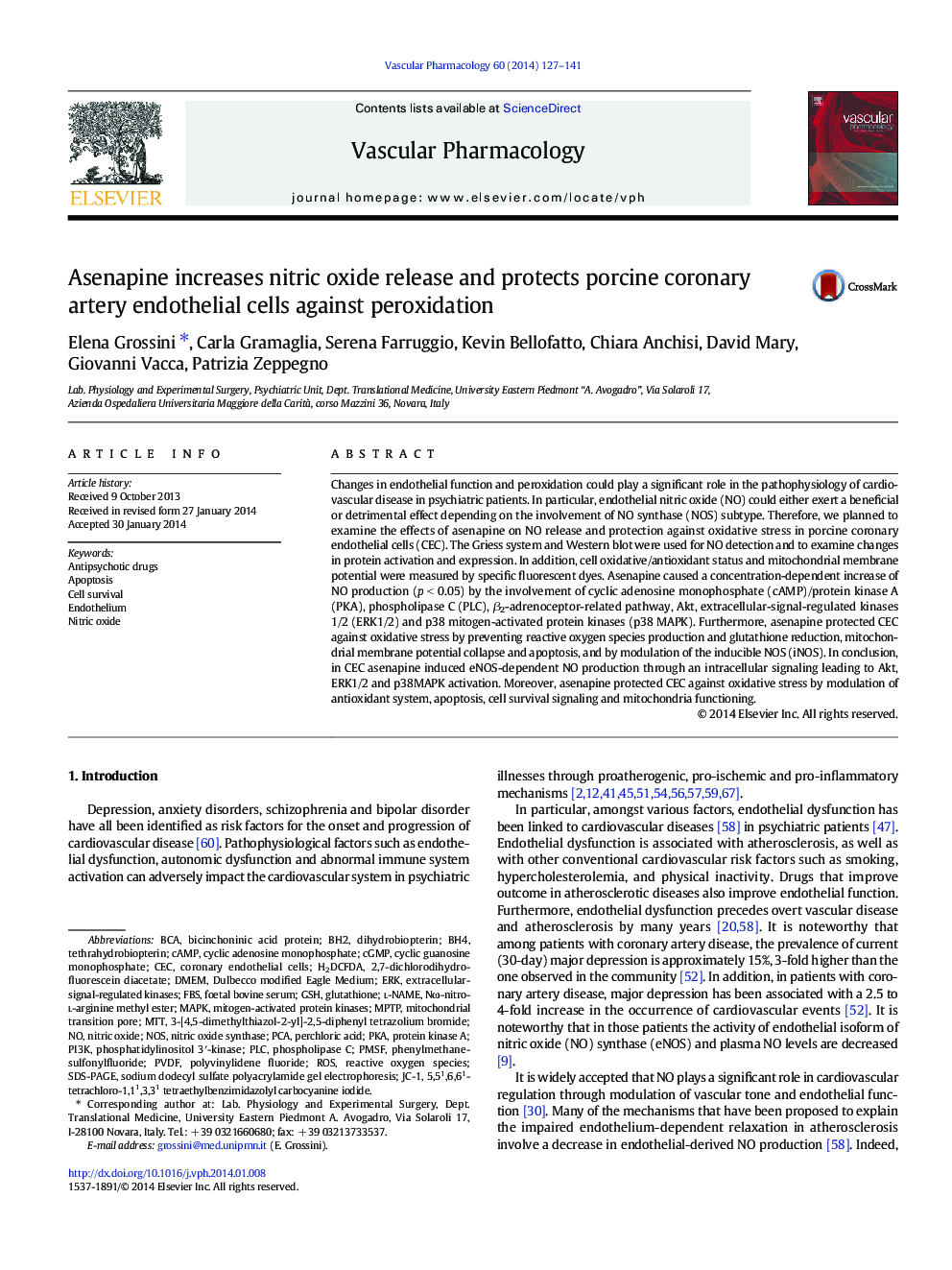| Article ID | Journal | Published Year | Pages | File Type |
|---|---|---|---|---|
| 2574223 | Vascular Pharmacology | 2014 | 15 Pages |
Changes in endothelial function and peroxidation could play a significant role in the pathophysiology of cardiovascular disease in psychiatric patients. In particular, endothelial nitric oxide (NO) could either exert a beneficial or detrimental effect depending on the involvement of NO synthase (NOS) subtype. Therefore, we planned to examine the effects of asenapine on NO release and protection against oxidative stress in porcine coronary endothelial cells (CEC). The Griess system and Western blot were used for NO detection and to examine changes in protein activation and expression. In addition, cell oxidative/antioxidant status and mitochondrial membrane potential were measured by specific fluorescent dyes. Asenapine caused a concentration-dependent increase of NO production (p < 0.05) by the involvement of cyclic adenosine monophosphate (cAMP)/protein kinase A (PKA), phospholipase C (PLC), β2-adrenoceptor-related pathway, Akt, extracellular-signal-regulated kinases 1/2 (ERK1/2) and p38 mitogen-activated protein kinases (p38 MAPK). Furthermore, asenapine protected CEC against oxidative stress by preventing reactive oxygen species production and glutathione reduction, mitochondrial membrane potential collapse and apoptosis, and by modulation of the inducible NOS (iNOS). In conclusion, in CEC asenapine induced eNOS-dependent NO production through an intracellular signaling leading to Akt, ERK1/2 and p38MAPK activation. Moreover, asenapine protected CEC against oxidative stress by modulation of antioxidant system, apoptosis, cell survival signaling and mitochondria functioning.
Graphical abstractIn A, NO release caused by asenapine in coronary endothelial cells. AC = adenylyl cyclase; ERK1/2 = extracellular signal regulated kinase; 5-HT1A = 5-HT1A serotonin receptor subtype; MAPK = p38 mitogen-activated protein kinases; PKA = protein kinase A; PKC = protein kinase C; PLC = phospholipase C.In B, protection exerted by asenapine against hydrogen peroxide induced apoptosis in porcine coronary endothelial cells. BH4 = tetrahydrobiopterin; eNOS = endothelial nitric oxide synthase; GSH = glutathione; iNOS = inducible nitric oxide synthase; ∆ω = mitochondrial membrane potential.Figure optionsDownload full-size imageDownload high-quality image (134 K)Download as PowerPoint slide
